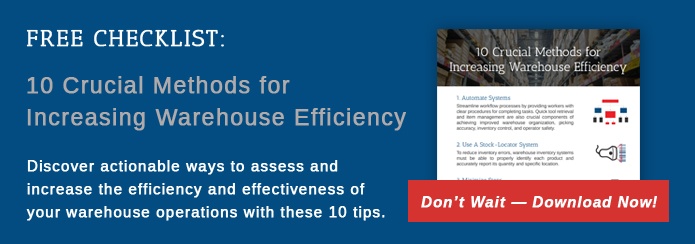 Your warehouse replenishment relies on up-to-date information to keep products flowing smoothly in and out the door. Effective use of Warehouse Management Systems and inventory controls can go a long way toward preventing out of stocks and improving efficiency in order fulfillment.
Your warehouse replenishment relies on up-to-date information to keep products flowing smoothly in and out the door. Effective use of Warehouse Management Systems and inventory controls can go a long way toward preventing out of stocks and improving efficiency in order fulfillment.
- Using On Demand and Min/Max Replenishment - There are two ways you can trigger replenishment of your inventory. The simplest way is to set a minimum and maximum inventory amount allowable in a location. As pickers take items out of the location, the inventory will move toward the lower threshold and eventually trigger a work order to replenish that location. On the other hand, some companies use an on-demand system that orders replenishment only when a customer order comes in for those products. The good news is that you don't have to choose one or the other. You can actually group products by category and use a combination of these methods to improve your warehouse replenishment.
- Fixed and Non-Fixed Locations - This comes down to your warehouse layout. Some warehouses use fixed locations for products so that they are always replenished to the exact same area. On the other hand, some companies use a non-fixed system that assigns products to the most convenient open location at that time. While this may seem confusing to the average person looking to pick, the reality is that your WMS is directing your pickers to the correct location so they don't need to keep locations stored in their heads. This variability makes it possible to easily adjust inventory levels for high demand products as trends change throughout the year, creating more space for the hottest products, and then reducing that space over time. It also means that pickers are more likely to find the products they are picking close to them instead of having to walk to the back corner of the warehouse for that one obscure product every time it is ordered.
- Build Strong Vendor Relationships - One of the biggest struggles that companies face with managing replenishment is depending on their vendors to deliver product reliably. Your WMS is only as effective as your partnerships with outside vendors, and even your auto-generated replenishment orders for product won't be enough if they are careless. While this may not be entirely within your control, taking the time to source products from trustworthy companies and building strong relationships with them will ensure that your warehouse doesn't suffer.
Your warehouse management software is capable of grouping SKUs by type, giving you the ability to change the way you replenish based on actual product attributes. If you are using your WMS to gather data, you will easily be able to determine which products belong in which groups. This data can also be used to choose between fixed and non-fixed locations. Finally, make sure your vendors understand how orders are created for warehouse replenishment and that they are proactive about using your technology as well.




